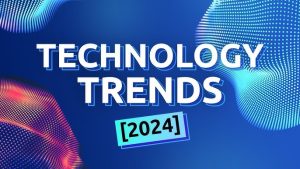1. Convergence of cloud, network and de
The rapid development of new network technologies is hastening the growth of cloud computing towards a new computing system – the convergence of cloud, network, and devices with a distinct division of labour. It serves as a catalyst for more demanding applications, such as extremely accurate industry simulations, real-time quality checks, and mixed reality. This new computer system is already expected to handle a large number of use cases.

2. AI for science
Machine learning is capable of processing large amounts of multidimensional and multimodal data while also solving challenging scientific challenges. This not only accelerates scientific research, but also helps to find new scientific laws. In the next three years, AI will see widespread use in research and some basic sciences.
3. Photonic silicon chips.
High Performance Computing (HPC) tests the physical limitations of electronic processors. Silicon photonics technology, which is rapidly developing due to cloud computing and artificial intelligence, provides an alternative. In the next three years, photonic silicon chips could be used to power high-speed data communications in huge data centres.
4. AI for renewable energy.
The most difficult obstacles in the development of renewable energies remain network integration, energy use rates, and storage. Artificial intelligence not only enhances energy efficiency on many levels, but it also helps to automate energy systems and improves resource utilisation and stability. In the next three years, it will make a substantial contribution to the integration of renewable energy sources into the power grid.
5. Highly precise medicine.
Doctors can use artificial intelligence to diagnose, treat, and predict illnesses more accurately and quickly, and possibly prevent them altogether. Patient-centric precision medicine powered by AI will thus have a substantial impact on various elements of health care in the next years.
6. Protected data processing.
Dedicated chips, crypto-algorithms, and whitebox implementations protect massive amounts of data while also allowing for the integration of data from several sources. The performance and interpretability of findings in the private domain are likely to increase dramatically during the next three years.
7. Expanded Reality (XR)
Mixed reality is establishing the groundwork for a new industrial ecosystem of electronic components, operating systems, and applications. It is transforming the way individuals interact with technology in both private and professional settings. In the next three years, a new generation of XR glasses that appear and feel identical to standard spectacles will allow access to the next generation of the Internet.
8. Soft Robotics
Soft robots differ from their “hard” counterparts due to advances in environmental observation and self-awareness, as well as more yielding materials. They are based on cutting-edge technology including flexible electronics, pressure-adaptive materials, and artificial intelligence. Soft robotics thus constitutes a crucial component for the manufacturing industry’s transition to small series production. Over the next five years they will replace conventional robots in the manufacturing industry and lead to a broader use of service robots in everyday life.
9. Satellite and terrestrial computing.
An integrated system combines HEO (highly elliptical orbit) and LEO (low Earth orbit) satellites with terrestrial mobile networks to provide comprehensive, multidimensional coverage. This means that even sparsely populated locations like deserts, oceans, and outer space may access digital services. In the next five years, satellites and terrestrial technologies will combine to establish an integrated network system capable of providing global connection.
10. Co-evolution of AI models at both large and small scales.
Models for large-scale pre-training are critical in the transition from weak to general AI. However, increased performance requires more energy. That is why the future of AI is based on the coexistence of large and tiny models across clouds, edges, and devices.





